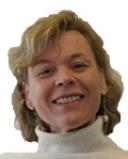Jessica Ennis, the London 2012 heptathlon champion, gives fitness tips for men in the March issue of British GQ. She is credited with bringing out the inner Olympian in every man. She advises men to:
• get a six pack with hanging leg raises
• build up your guns with inclined bench press
• lose weight by interval and hill running
In addition, she urges men to train for a triathlon or a 10K race (but not to have sex before), to have a sauna before a massage, eat carbs during the day, and exercise to music. It turns out that she likes men who shave their legs but do not wear tight ‘vests’ or lycra shorts.
Ennis’ advice caught my eye because women are not often asked to give men exercise advice (Jessica’s own coach is a man). What made her a veritable person for this task? Obviously, she an elite athlete with an Olympic gold medal and thus, she should know how to train her body. In the article, she indeed tells the male readers what type of training she enjoys. But how does that inspire potential male exercisers? Why not have the gold medal winner in men’s decathlon, Ashton Eaton, give advice instead?
With a closer look, Ennis’ advice focuses on how the male body should look. This is the type of exercise that women are used to seeing in numerous women’s magazines. How often are we urged to get a slim and toned tummy, build up toned thighs, or lose weight?
Ennis’s fitness tips for men, thus, mirror a need for men to exercise to look good. Traditionally, men’s exercise advice has focused on improved performance through building strength or endurance, but the focus on the looks of the body is by no means a novel development.
The importance of male physical appearance materialized in the physical culture movement at the turn of 20th century. One of the earliest proponents of this movement was Eugen Sandow who, originally from Prussia, made his fame in England and later in the US as ‘strong man’ whose perfect physique was admired on the stage. For example, at the World’s Columbian Exhibition in Chicago in 1893 Sandow, whose body was said to be shaped like the statues from Ancient Greek, performed a series of ‘classical poses’ on a special wooden box with special lighting focusing on each of the muscles groups. With connections to Greek culture, Sandow’s performance used art to celebrate the beauty of the almost naked male body. In their article, Vanessa Barlow and Lucy Townsend list the vital statistics of Sandow’s exemplary body:
Height 5ft 9in
Waist 29in
Chest 48in (62in when flexed)
Neck 18in
Biceps 19.5in
Forearms 16.25in
Thighs 27in - same as indoor cyclist Chris Hoy
Calves 18in
In the same article, the deputy editor of Men’s Health finds Sandow’s body proportions “’pretty exceptional” compared to today’s standards: “generally much larger than the average man, though with a slim 29in waist.”
Another man who later became a known physical culturist in the US, Bernarr MacFadden, was greatly inspired by Sandow’s Chicago performance. MacFadden, who was credited for a forceful personality, a need for appearing in the public eye, and good marketing sense, made his body an end in itself. Like Sandow, he was inspired by Greek sculpture, but also cultivated a connection between ‘body love’ and health. In a way, MacFadden epitomized a successful ‘rags to riches’ story: from a humble beginning as a sickly orphan he made a significant fortune as a performer, publisher of several books and his two main magazines Physical Culture and the True Story. Physical exercise transformed MacFadden’s life and thus, health became of outmost importance for him. The body was both the means and the end of admiration in MacFadden’s physical culture movement: exercising the body gave vitality to the individual. “Strong and beautiful body,” he proclaimed, “has become a thing of honor and glory” (cited in Mrozek, 1989, p. 34). MacFadden often posed for his own publications, but also organized ‘beauty pageants’ for both men and women. One of the most famous ‘protégés’ and the winner of several of MacFadden’s competitions was another major physical culturist, Charles Atlas. Like MacFadden he cultivated the ‘perfect manhood’ through body confidence, grooming, exercise, and diet. Currently, some credit Sandow as the ‘father’ of bodybuilding and thus, the physical culture movement might be seen to continue to live through this sport.
MacFadden, who died in 1955, also organized ‘perfect woman’ contests. Like the male body, the female body was to have proportion and symmetry, but was also to be capable, strong, enduring and thus, healthy. The feminine functional beauty for MacFadden was a means for productive motherhood. As an interesting comparison to the perfect male proportions of Sandow, the winner of MacFadden’s 1904 competition, Emma Newkirk’s vital statistics were:
Height: 5’4 ½
Weight: 136 lb
Bust: 35 inches
Waist: 25 inches
Hips: 36 inches
Thighs: 23 ½ inches
The current ideal feminine body differs somewhat from the perfect female body of the early 20th century. Women were to seek the ideal body for the benefit of their children which obviously constituted the fulfillment of their potential in the eyes of MacFadden. According to MacFadden, the male physical culturist’s “main goal was to fulfill individual potential; what society gained from individual health was derivative and secondary” (Mrozek, 1989, p. 33).
The physical culture movement was created and led by men: they defined both the masculine and feminine ideals. This did not mean that the male physical culturists lacked female admirers, but they did not build their bodies in order to appear more attractive to women. Have things changed since physical culture movement? Based on Ennis’ fit tips, a woman can now be in the position to give men exercise advice on how to shape their bodies toward perfection. Is there, thus, a hint that men are now to build a body to please women instead of thinking of their own happiness?
But does Ennis redefine men’s body ideal? The same features that characterized the physical culture ideal—the muscular upper body, the biceps, well-defined abdominals, absence of fat—continue to be part of the ideal masculine body. They are the main targets for transformation by physical exercise even if men are not to be as muscular as Sandow. Does that mean that women admire the type of male body men have defined as beautiful? The women’s body ideal has certainly changed since physical culture days, but is it still defined by men?
We could also argue that the ideally beautiful human body shape is not defined by men (or women), but rather is ‘natural.’ However, the physical culturists’ bodies were sculpted to their shapes as they were not born with their perfectly portioned muscularity. On the contrary, MacFadden was a sickly, thin, and small child and Atlas was a thin and frail youth. Consequently, they emphasized the work needed for bodily perfection. In addition, the female body ideal has been modified significantly over the centuries. Our genes would not have changed so drastically since the early 1900s to result in a different body shape (the male genes obviously haven’t). What we consider the ideal body shape is also influenced by the cultural preferences of the society in different eras in addition to our genes. It seems, however, that we do find it important to appear attractive, but who defines what it means to be attractive is an important question to ponder.
Barford, V. & Townsend, L. (2012, October). Eugen Sandow: The man with the perfect body. BBC News Magazine. www.bbc.co.uk/news/magazine-19977415. Downloaded March 26, 2013.
Todd, J. (1987), Bernarr MacFadden: Reformer of feminine form. Journal of Sport History, 14(1), 61-75.
Fabian, A. (1993). Making a commodity of truth: Speculations on the career of Bernarr Macfadden. American Literary History, 5(1), 51-76.
Mrozek, D. J. (1989). Sport in American life: From national health to personal fulfillment, 1890-1940. In K. Gover (Ed.), Fitness in American culture: Images of health, sport, and the body, 1830-1940 (pp. 18-46). Rochester, New York and Amherst, MA: The Margaret Woodbury Strong Museum and the University of Massachusetts Press.




